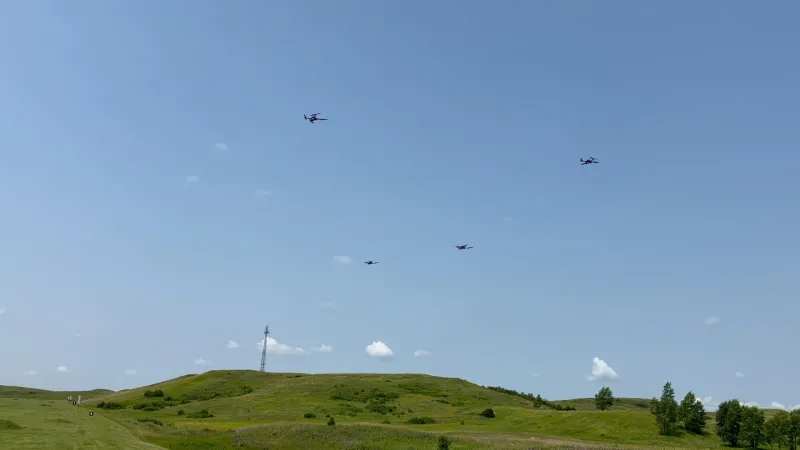The United States Department of Homeland Security’s Science and Technology Directorate’s (S&T) Counter-Unmanned Aerial System (C-UAS) programme and partners are furthering a public-private collaboration to assess innovative C-UAS technologies to thwart drones being used for nefarious purposes.
During the latest round of evaluation in July, S&T put three additional technologies to the test, in part to understand the collateral effects of using kinetic capabilities. Testing took place at Camp Grafton South in North Dakota, which is managed by the North Dakota National Guard. The University of North Dakota—which is part of the Federal Aviation Administration’s Center of Excellence for Unmanned Air Systems—the Northern Plains UAS Test Site, and accessND provided the personnel and expertise to execute the demonstration. S&T shared details of the event in an article published on its website on October 24.
“The goal of the project is to investigate the state of the market in kinetic mitigation capabilities and determine the effects of using these capabilities, in order to decide which ones are suitable for the different Department of Homeland Security (DHS) component mission sets,” said S&T Program Manager Andy Myers. “The demonstrations have provided a foundation for identifying capabilities that look promising for further development, which will inform future S&T exploratory efforts.”
One of the participants was Lockheed Martin Advanced Technology Laboratories. Its Coordinated Autonomous Remote Intercept capability deployed specialised UAS group target tracking algorithms to cluster detections of aircraft, enabling the tracking of drone swarms, including their size, location, and movement. The system then autonomously launched a swarm of defensive aircraft to intercept the incoming threat.
Other participants included Fortem Technologies, which demonstrated its DroneHunter F700.
S&T said in its article that “among the promising technologies in the offing were a rotor-entanglement system and GPS jamming” and that test and evaluation work will continue. “The ongoing collaboration will offer DHS’s first opportunity to test GPS jamming capabilities. The rotor-entanglement system uses a unique delivery vehicle created via 3D printing technology, making for a cost-effective mitigation system.”
For more information
Image: The target: A swarm of ‘defensive’ drones form an arc at right to block an incoming ‘malicious’ drone (left foreground) during testing of a drone defence system over Camp Grafton South, which is managed by the North Dakota National Guard. (Photo credit: Lockheed Martin Advanced Technology Laboratories)




